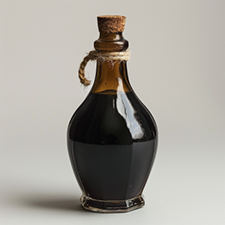The Magic of Brown Sugar and How You Can Make It
Posted by Matteo Lahm on 16th May 2024
Today, we're diving into the sweet, sticky world of brown sugar and how it can transform your homemade beer and wine into something truly special. If you’ve ever wondered why your brew doesn’t have that extra oomph or your wine lacks that luscious mouthfeel, brown sugar might just be a friend you have overlooked. The best part is that it’s easy to make it yourself, but we will get to that in a bit.
Brown sugar is essentially white sugar with molasses. Chemically, it’s a mix of sucrose and a small percentage of glucose and fructose, thanks to the molasses. Molasses is what gives brown sugar its distinct color, flavor, and moisture content. It’s like white sugar’s cooler, more complex cousin who’s been around the block a few times.
So, why should you care about this caramel-colored concoction? Simple. Brown sugar adds depth. It’s like the background singer in a rock band—subtle but essential. When you add brown sugar to your beer or wine, you’re not just upping the alcohol content; you’re also introducing a richer, more nuanced flavor profile. Think toffee, caramel, and a hint of molasses. It’s like giving your brew a warm, comforting hug.
Molasses, the dark, viscous byproduct of refining sugarcane or sugar beets into sugar, is a treasure trove of complex flavors that is mostly responsible for brown sugar’s flavor. Its distinct taste comes from the concentration of various compounds during the boiling process. Unlike refined white sugar, which is stripped of its natural components, molasses retains a rich mix of minerals, vitamins, and organic acids. These include iron, calcium, magnesium, and potassium, which contribute to its robust, earthy sweetness. The caramelization of sugars during the boiling process also imparts deep, toasty notes, while the presence of phenolic compounds adds a subtle bitterness and a hint of smokiness. This intricate blend of flavors makes molasses a unique ingredient that can add depth and character to your beer or wine, transforming a simple brew into a symphony of taste.
Brown sugar strikes a perfect balance between the straightforward sweetness of refined sugar and the intense, sometimes overpowering complexity of molasses. When you add molasses in its raw form, its robust, earthy flavors can easily dominate your brew, overshadowing the more delicate notes you’ve worked hard to cultivate.
Enter brown sugar, the happy medium. By blending molasses with refined cane sugar, brown sugar offers a more nuanced flavor profile. It introduces those rich, caramel and toffee undertones without overwhelming your palate. This subtlety allows the other ingredients in your beer or wine to shine through, creating a harmonious blend of flavors. Essentially, brown sugar gives you the best of both worlds: the depth and character of molasses, tempered by the clean sweetness of refined sugar.
This is not to say that raw molasses by itself cannot be essential to a brew. It absolutely can, especially in cases where you don’t need to sweeten too much but you want those flavors more pronounced. However, when you need a lot more sugar and do not want those flavors to be front and center, brown sugar is the right choice.
So, how you can incorporate brown sugar into your brewing and winemaking process? Timing is everything: add brown sugar during the boil for beer or during the primary fermentation for wine. This ensures that the yeast has plenty of time to munch on those sugars and convert them into alcohol.
Measure wisely: a good rule of thumb is to replace up to 10-15% of your fermentable sugars with brown sugar. Too much, and you risk overpowering the natural flavors of your brew or wine. Dissolve first: brown sugar can be a bit clumpy. Dissolve it in a small amount of hot water before adding it to your mix to ensure even distribution. Monitor fermentation: brown sugar can speed up fermentation, so keep an eye on those bubbles. You don’t want a volcanic eruption in your fermenter.
Adding brown sugar to your beer or wine will give it a fuller body and a smoother mouthfeel. In beer, expect a richer, maltier flavor with hints of caramel and toffee. In wine, you’ll get a more robust, rounded taste with a slight molasses undertone. It’s like upgrading from a regular coffee to a caramel macchiato—same base, but oh-so-much better.
Brown sugar isn’t a one-size-fits-all solution. Here’s when you should reach for it and when you might want to think twice. Use it when you’re making darker beers like stouts, porters, or brown ales. The caramel and toffee notes will complement these styles beautifully. It’s also great for crafting a dessert wine or a spiced wine, as the added sweetness and complexity will elevate your creation. And if you want to experiment with flavor, brown sugar can add a unique twist to your brew or wine.
On the flip side, skip it when you’re making a light, crisp beer like a pilsner or a lager. The heavy flavors of brown sugar can overwhelm these delicate brews. It’s also best avoided if you’re aiming for a dry wine, as the residual sweetness from brown sugar might not be what you’re looking for. And if you’re a purist who wants to stick to traditional recipes, brown sugar might not be your best bet.
And for the grand finale, if you want more control over the balance of flavors, you can easily concoct your own brown sugar by mixing cane sugar and molasses yourself. The standard ratio to achieve that perfect blend is typically one cup of cane sugar to one tablespoon of molasses. Simply combine the two and mix thoroughly until the molasses is evenly distributed, and voilà, you’ve got homemade brown sugar! This DIY approach allows you to control the intensity of the molasses flavor, giving you the flexibility to tweak the proportions to suit your specific brewing or winemaking needs. Whether you want a lighter touch for a more subtle flavor or a bit more molasses for added depth, you can adjust accordingly. It’s like having a flavor dial at your fingertips, ready to fine-tune your brew to perfection.
The other advantage to DIY is that brown sugar is clumpy when premade, and it needs to be refrigerated. Using molasses to make your own is much easier because molasses is very shelf stable. If stored properly, it can last for years, and it is already in liquid form. Just add it to your sugar slurry and you are all set.
Now you know the skinny on brown sugar. It isn’t just for your morning oatmeal or your grandma’s cookies. It’s a versatile, flavor-boosting ingredient that can add a whole other dimension to your homebrew or homemade wine. Cheers to your next great batch!



